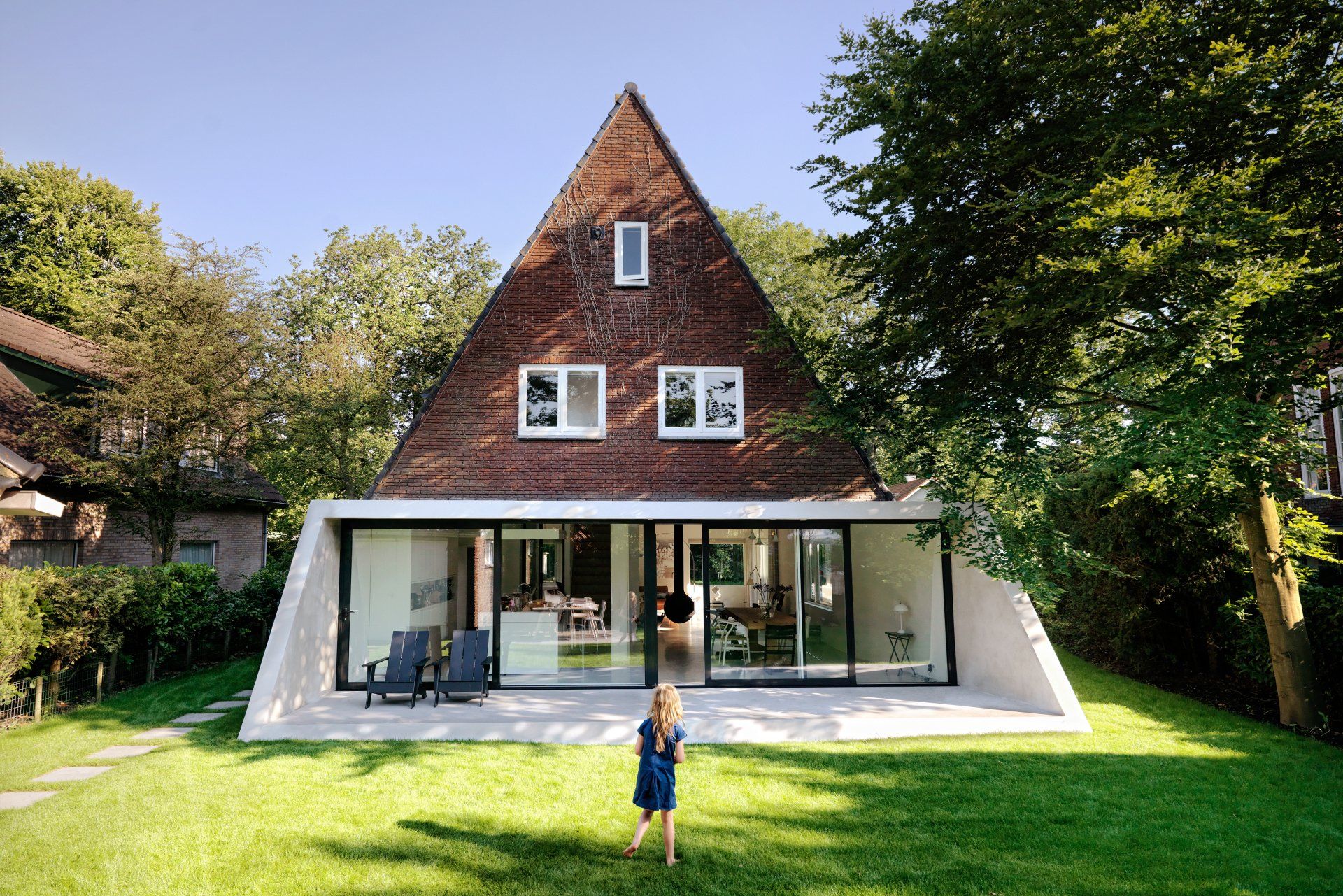
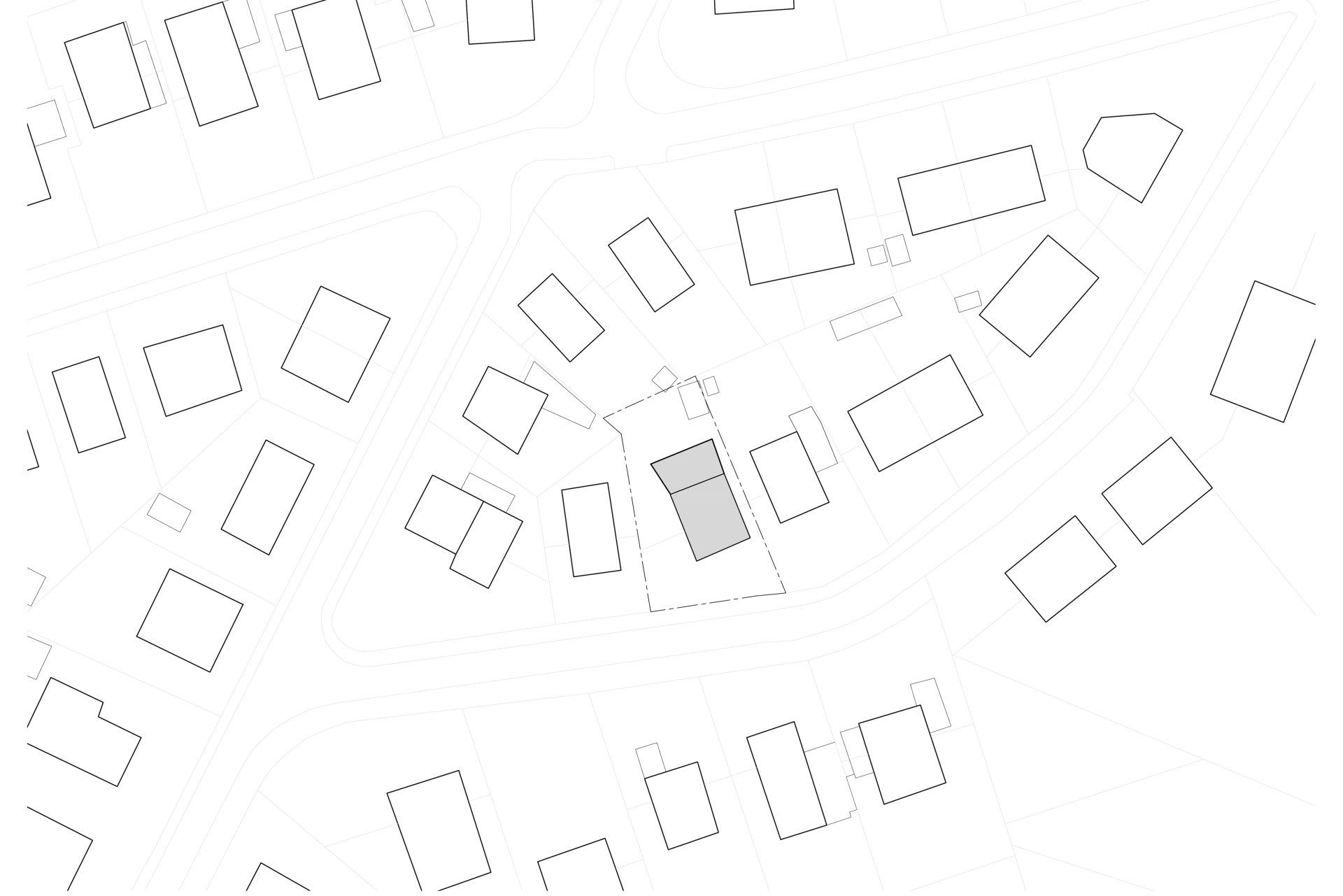
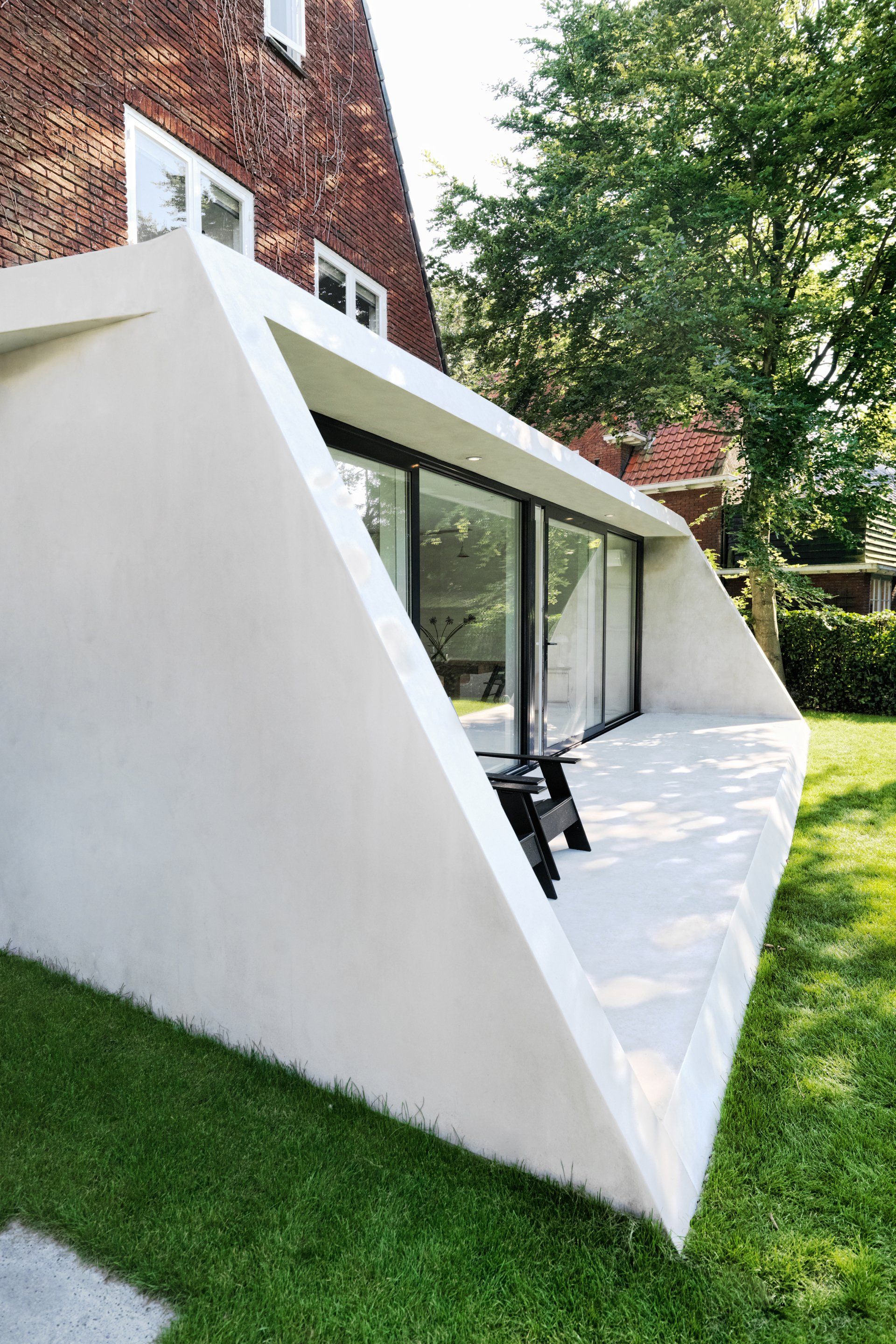
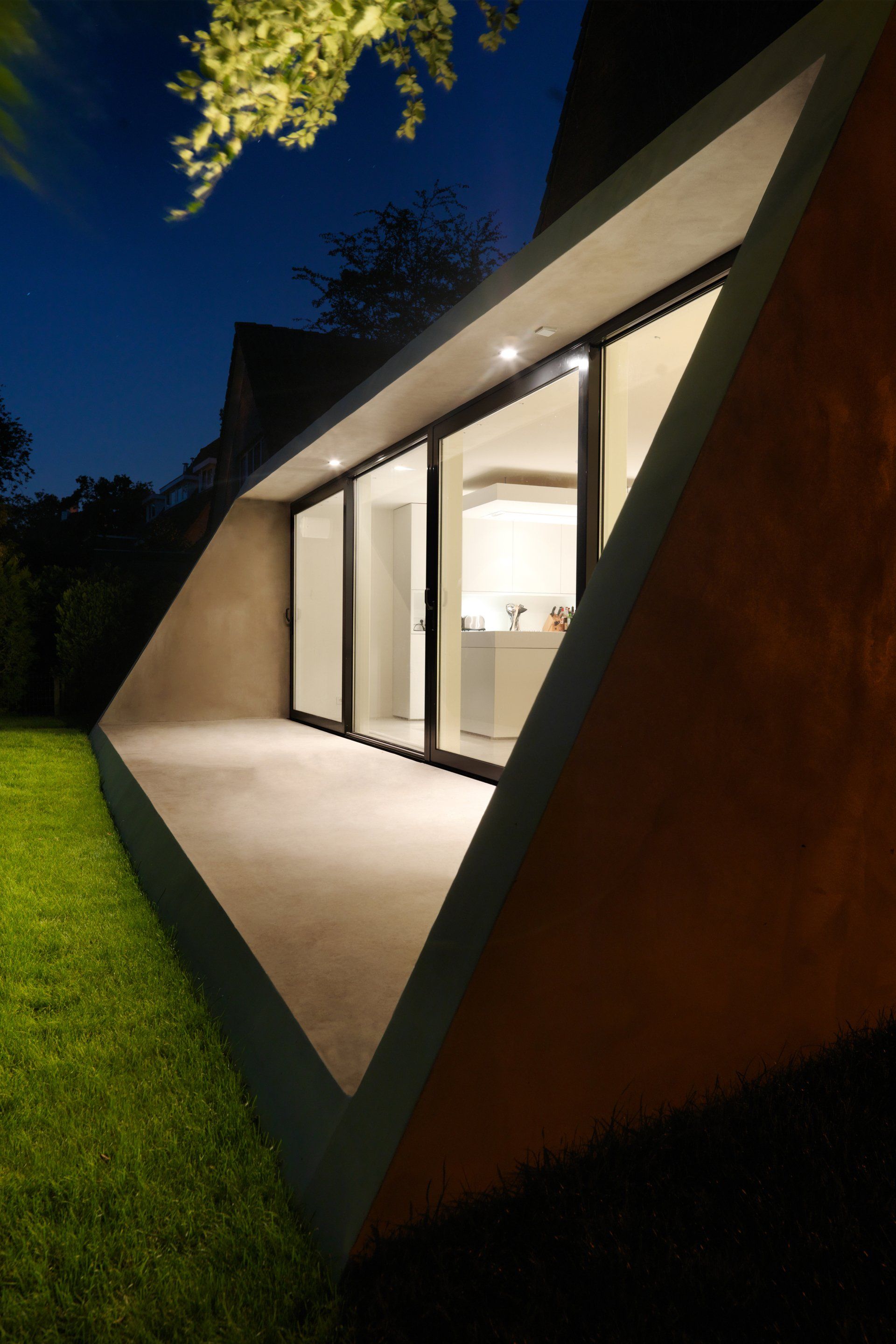
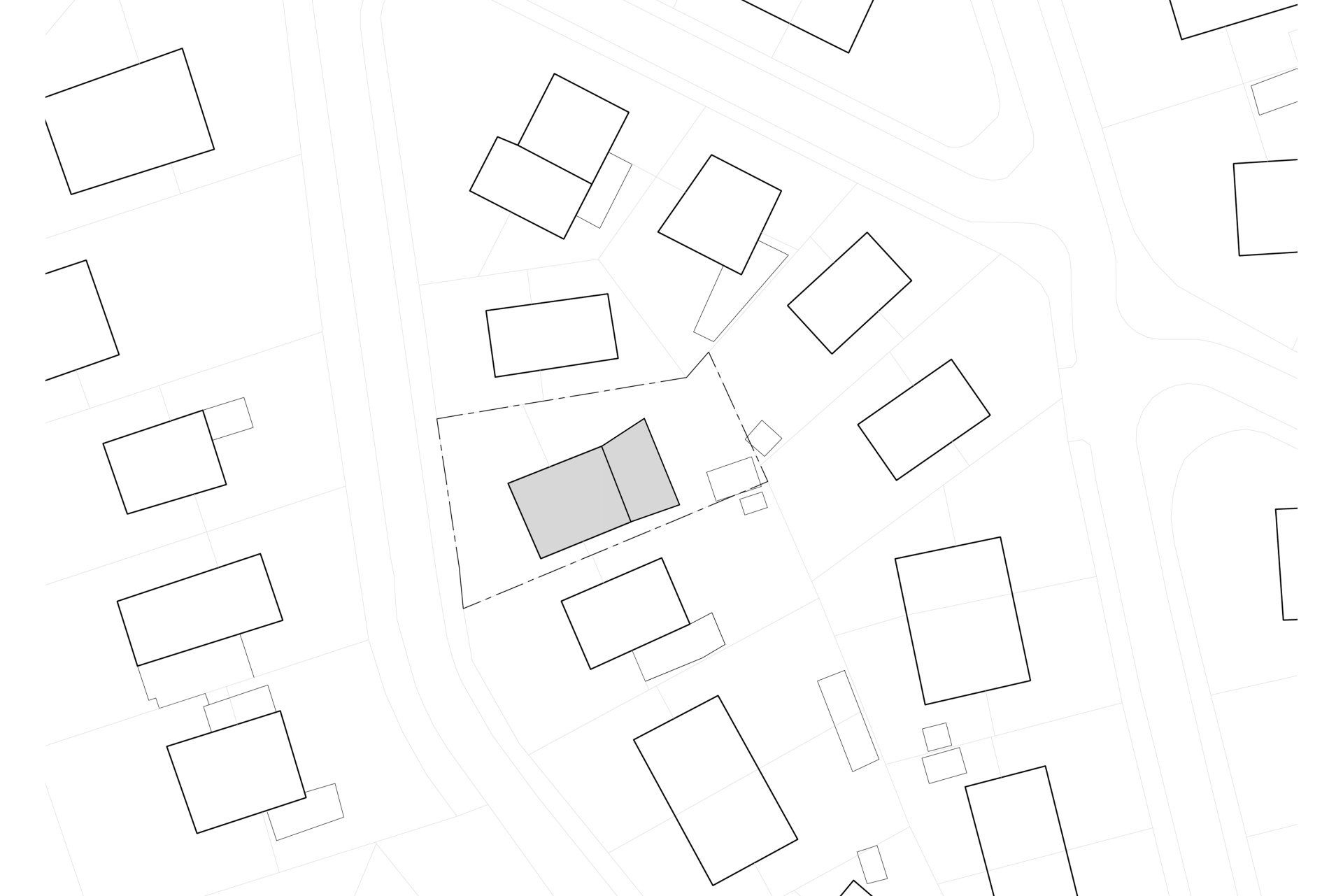
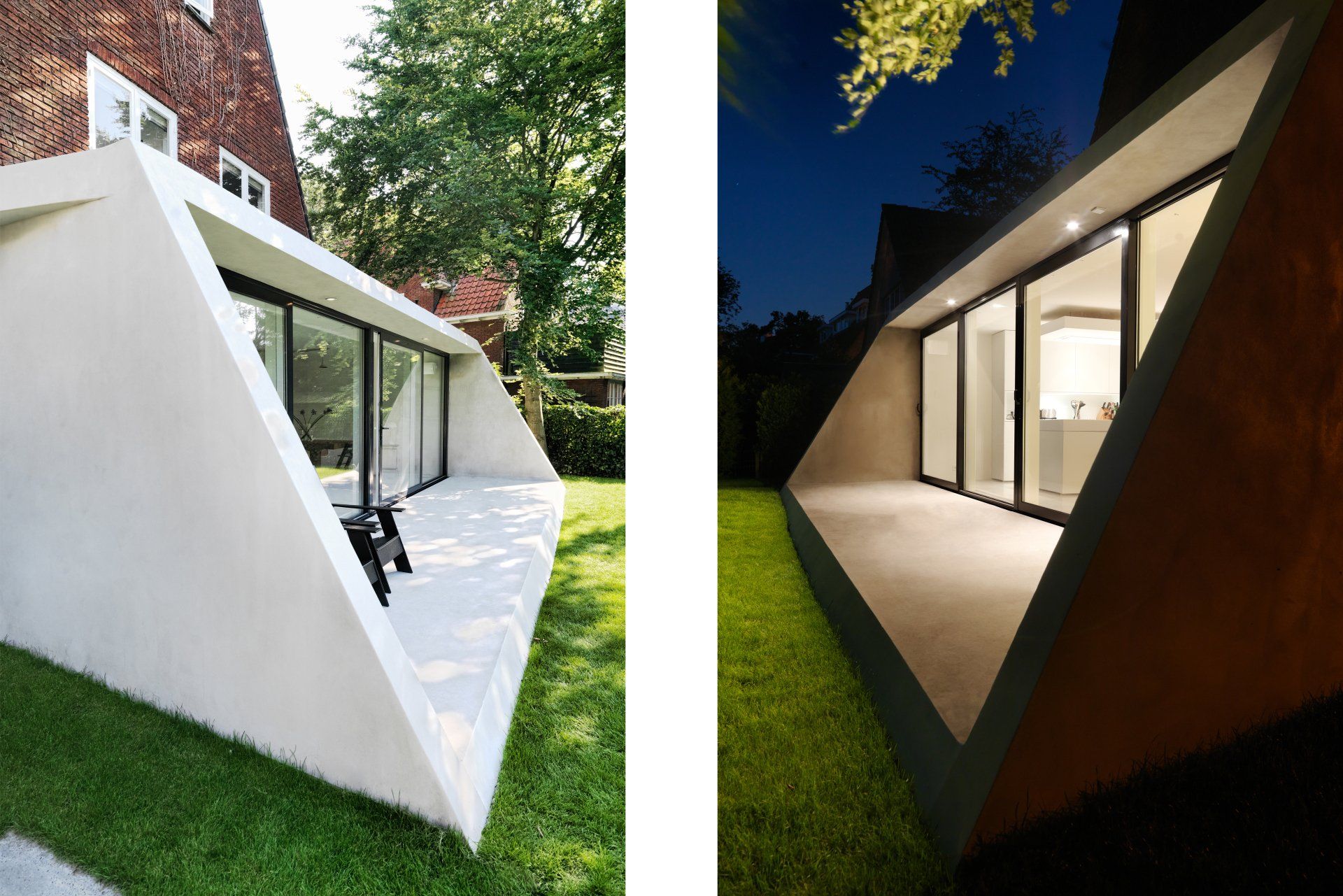
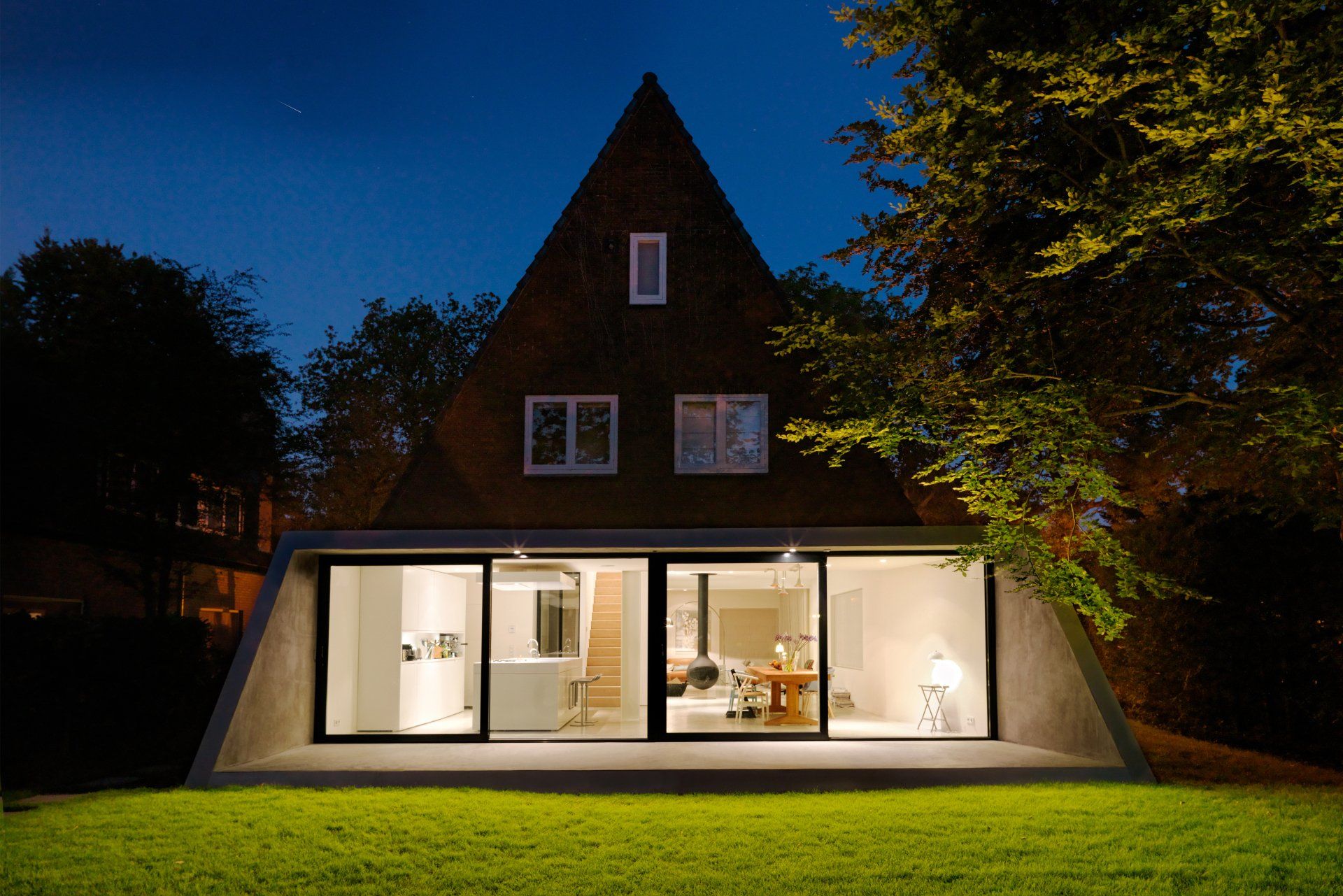
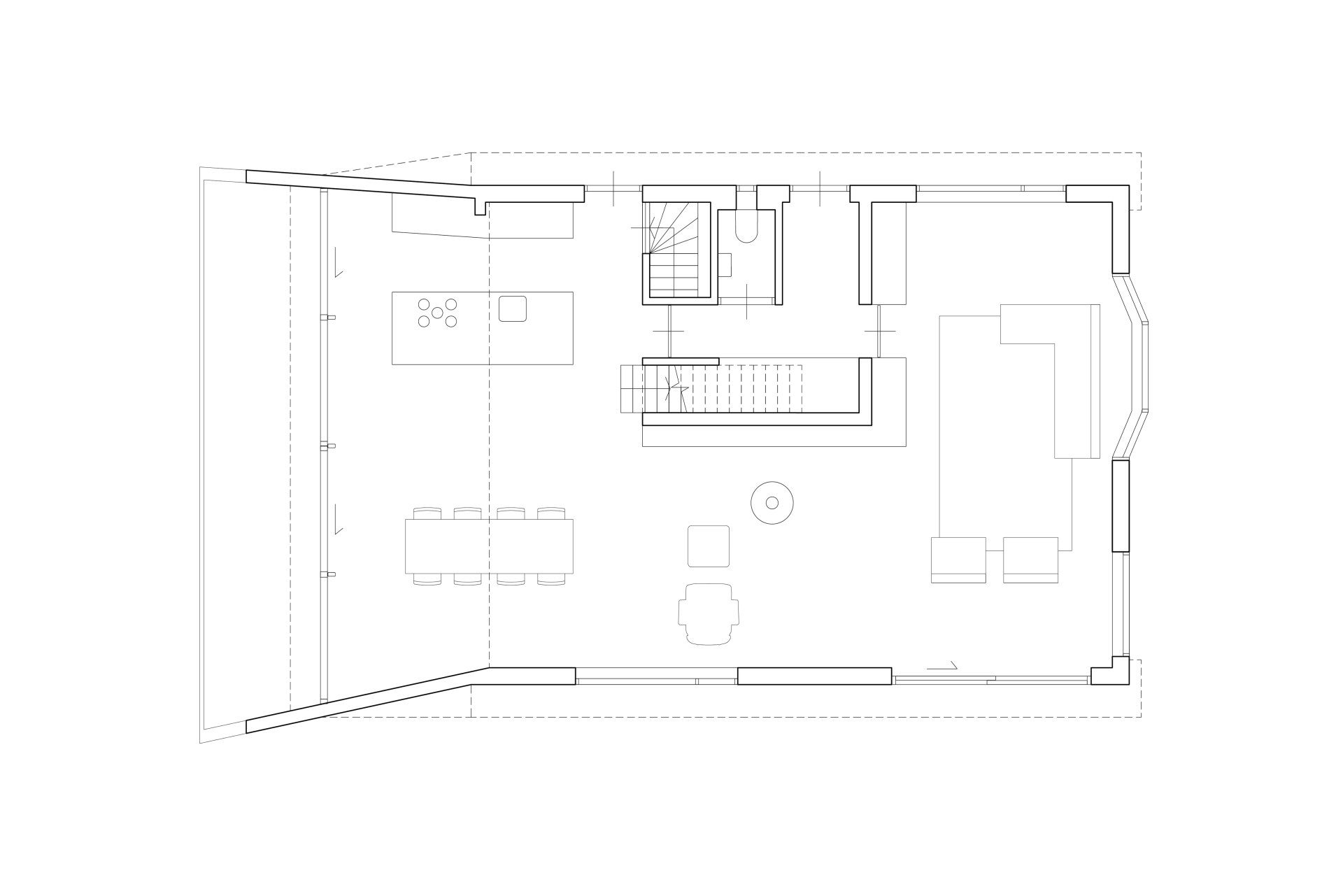
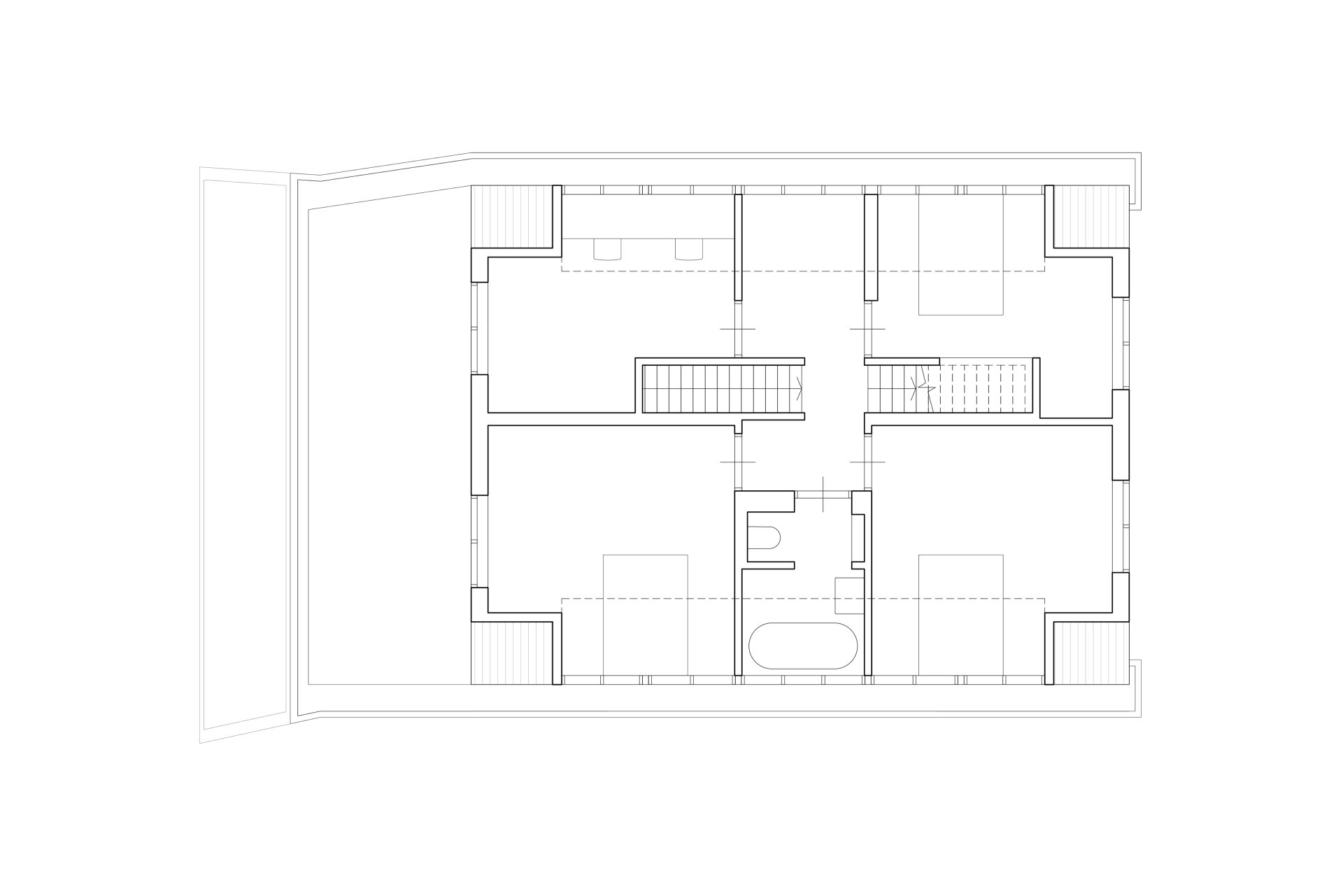
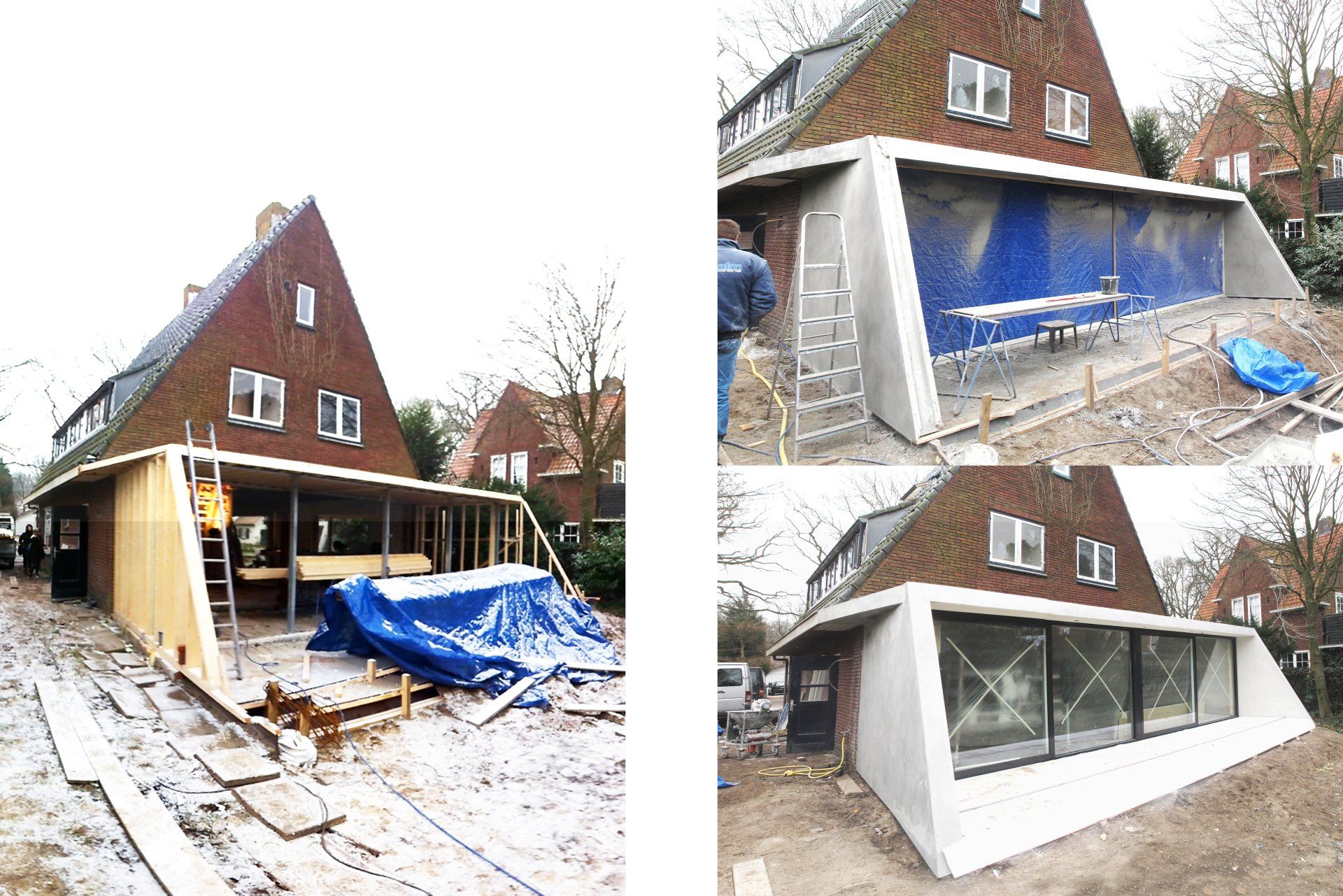

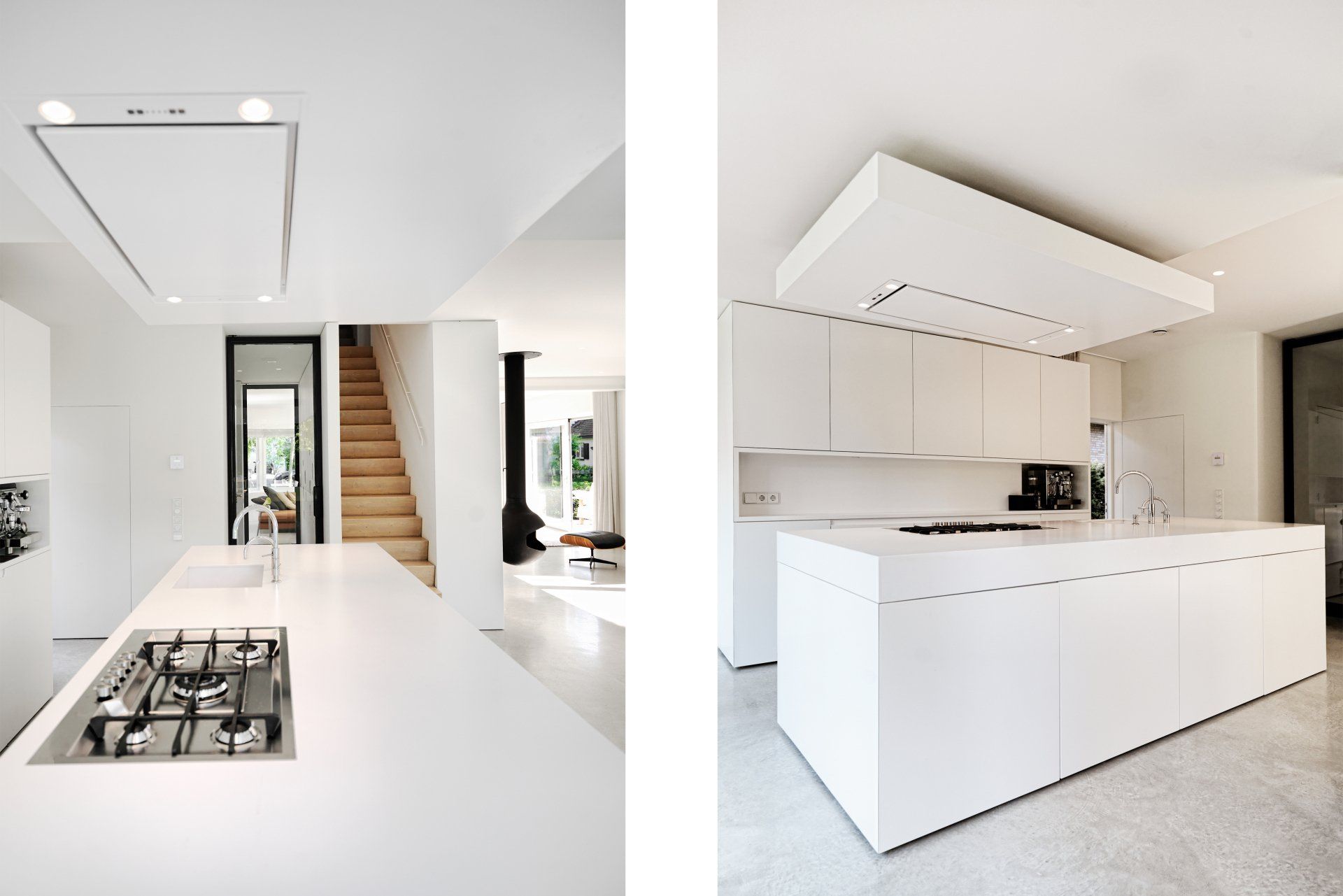
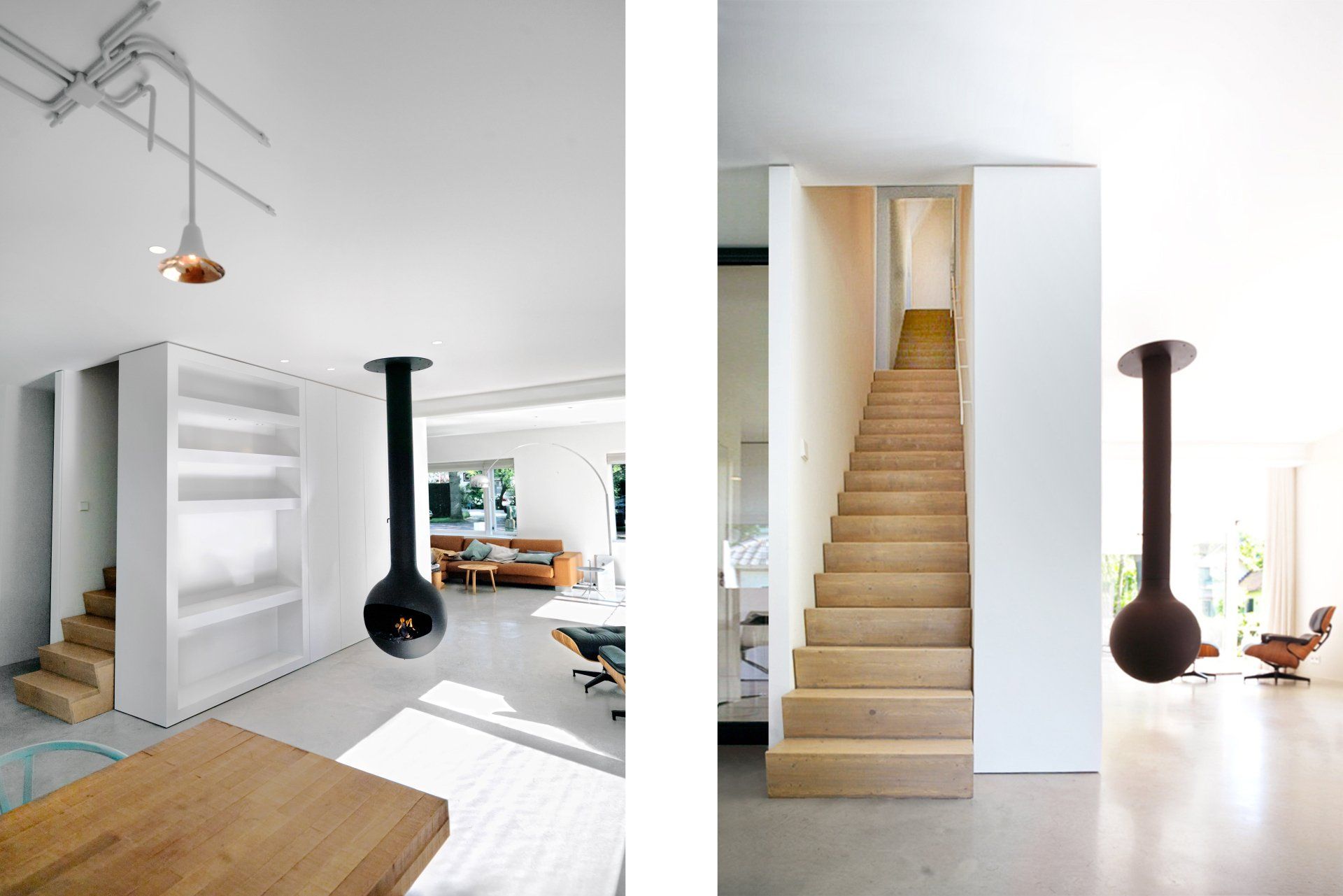
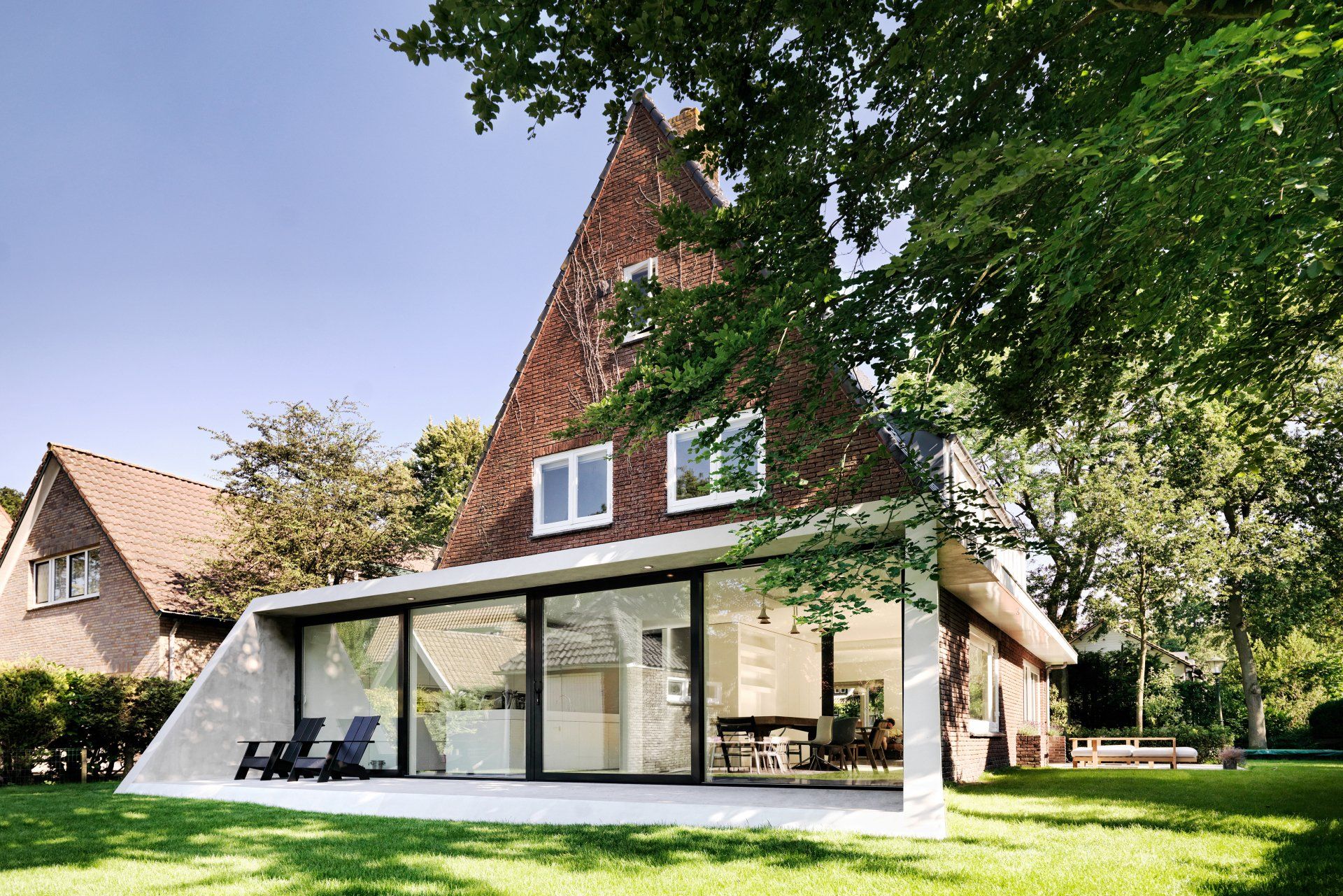
SH HOUSE
Location: Bentveld
Programme: Alterations & addition
Status: Completed
Year: 2011 - 2012
Client: Private
Area: 210m2
Team: Jacco van Wengerden, Gijs Baks, Freek Bronsvoort, Milda Grabauskaite, Vineta du Toit
Stuctural Engineer: Ingenieursbureau Man
Building Physics; Adviesbureau Bleumink
Contracter: H&B Bouw BV
Interior Fit-out: Thomas Meubels
Photography: Yvonne Brandwijk
-
TEXT
This was a dark and compartmental house that reflected the way that people lived in 1932, when it was built. The house was transformed and enlarged with an open floor plan, a view to the garden, and a triangular section that continues the slope of the original roof.
The house is in Bentveld, a village between Haarlem and the North Sea.
The key to the project was to maintain the overall shape and integrity of the original structure while creating an open floor plan that directs views to the garden. Thus the distinction between garden and interior is almost eliminated so that the garden becomes part of the living space.
This was achieved by removing the internal partitions, thereby dispensing with the small, compartmental rooms that separated functions.
A new staircase was constructed, acting as the backbone of the house and connecting the first floor and attic to the ground level and garden. The result is a light and open house designed for the way we live now.
The extension itself is realized in splayed concrete. It looks and feels like a natural continuation of the vernacular roof, and the absence of details strengthens the shape.
Location: Bentveld
Programme: Alterations & addition
Status: Completed
Year: 2011 - 2012
Client: Private
Area: 210m2
Team: Jacco van Wengerden, Gijs Baks, Freek Bronsvoort,
Milda Grabauskaite, Vineta du Toit
Stuctural Engineer: Ingenieursbureau Man
Building Physics; Adviesbureau Bleumink
Contracter: H&B Bouw BV
Interior Fit-out: Thomas Meubels
Photography: Yvonne Brandwijk
This was a dark and compartmental house that reflected the way that people lived in 1932, when it was built. The house was transformed and enlarged with an open floor plan, a view to the garden, and a triangular section that continues the slope of the original roof. The house is in Bentveld, a village between Haarlem and the North Sea.
The key to the project was to maintain the overall shape and integrity of the original structure while creating an open floor plan that directs views to the garden. Thus the distinction between garden and interior is almost eliminated so that the garden becomes
part of the living space. This was achieved by removing the internal partitions, thereby dispensing with the small, compartmental rooms that separated functions.
A new staircase was constructed, acting as the backbone of the house and connecting the first floor and attic to the ground level and garden. The result is a light and open house designed for the way we live now.
The extension itself is realized in splayed concrete. It looks and feels like a natural continuation of the vernacular roof, and the absence of details strengthens the shape.

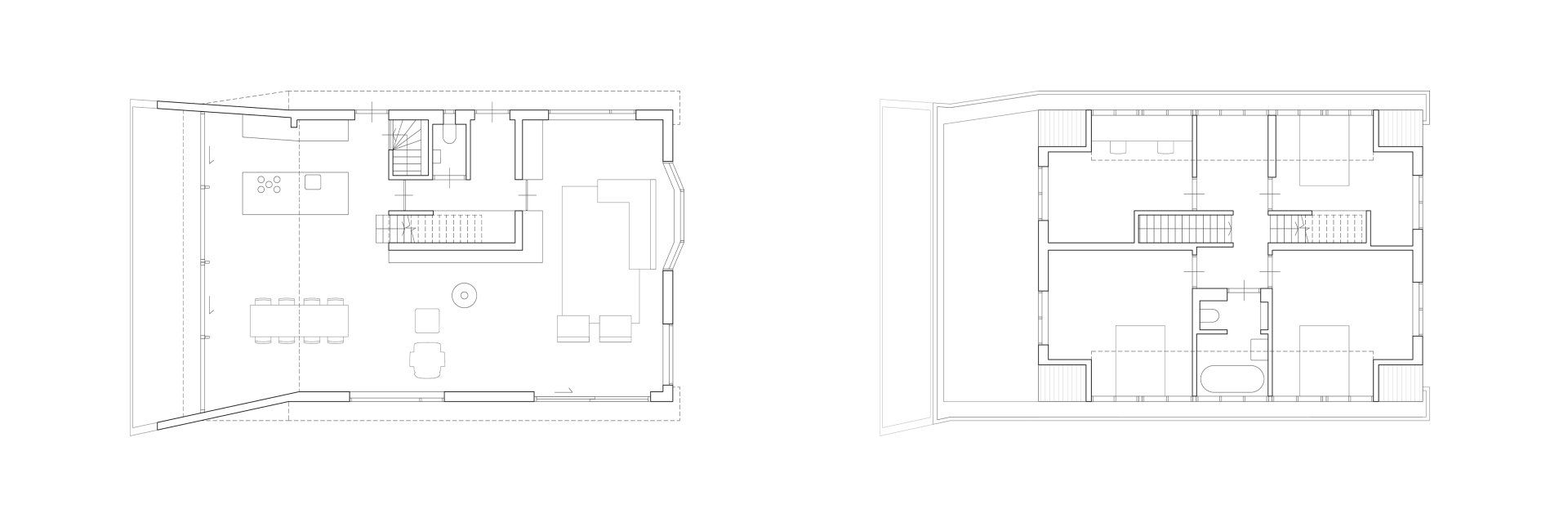
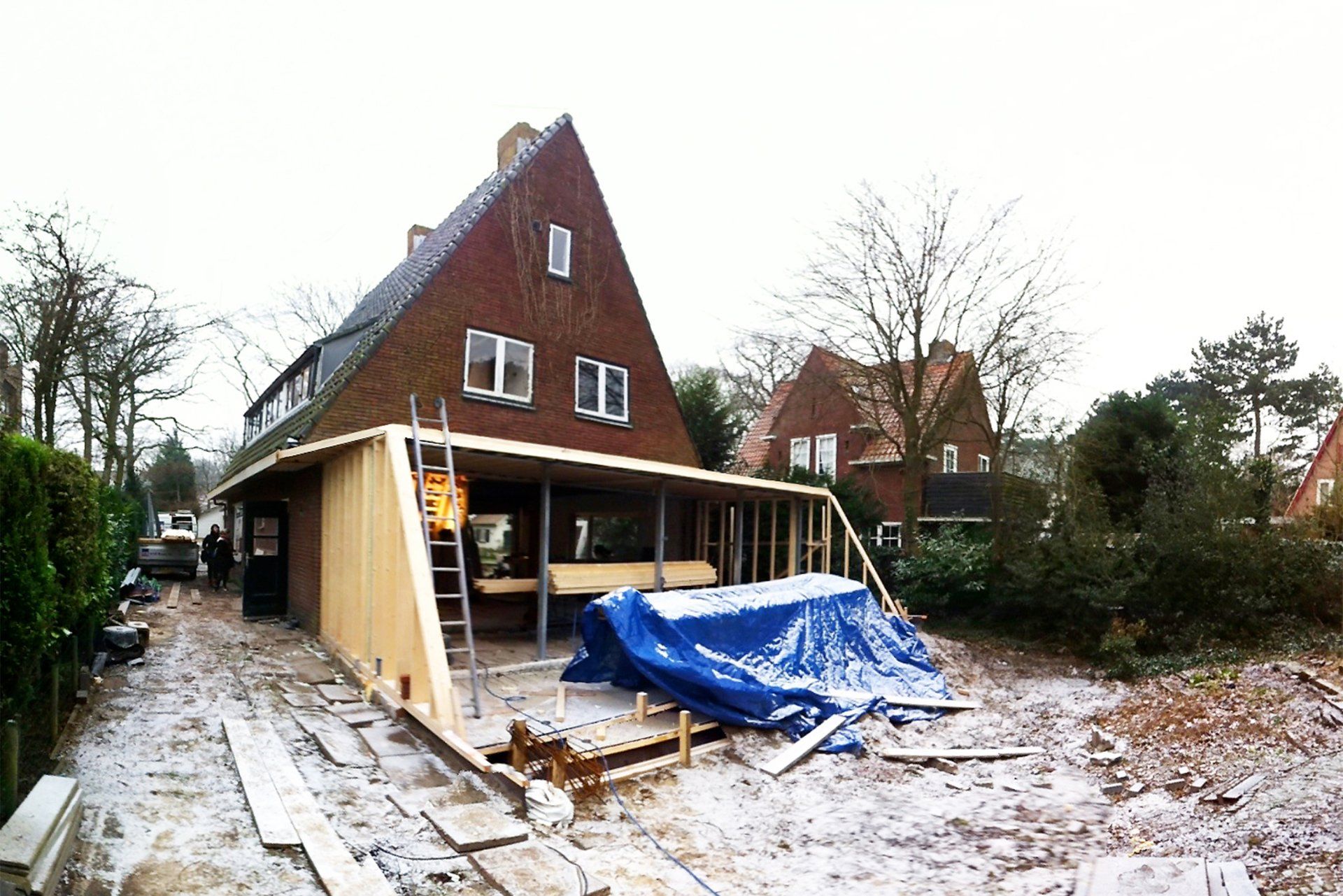
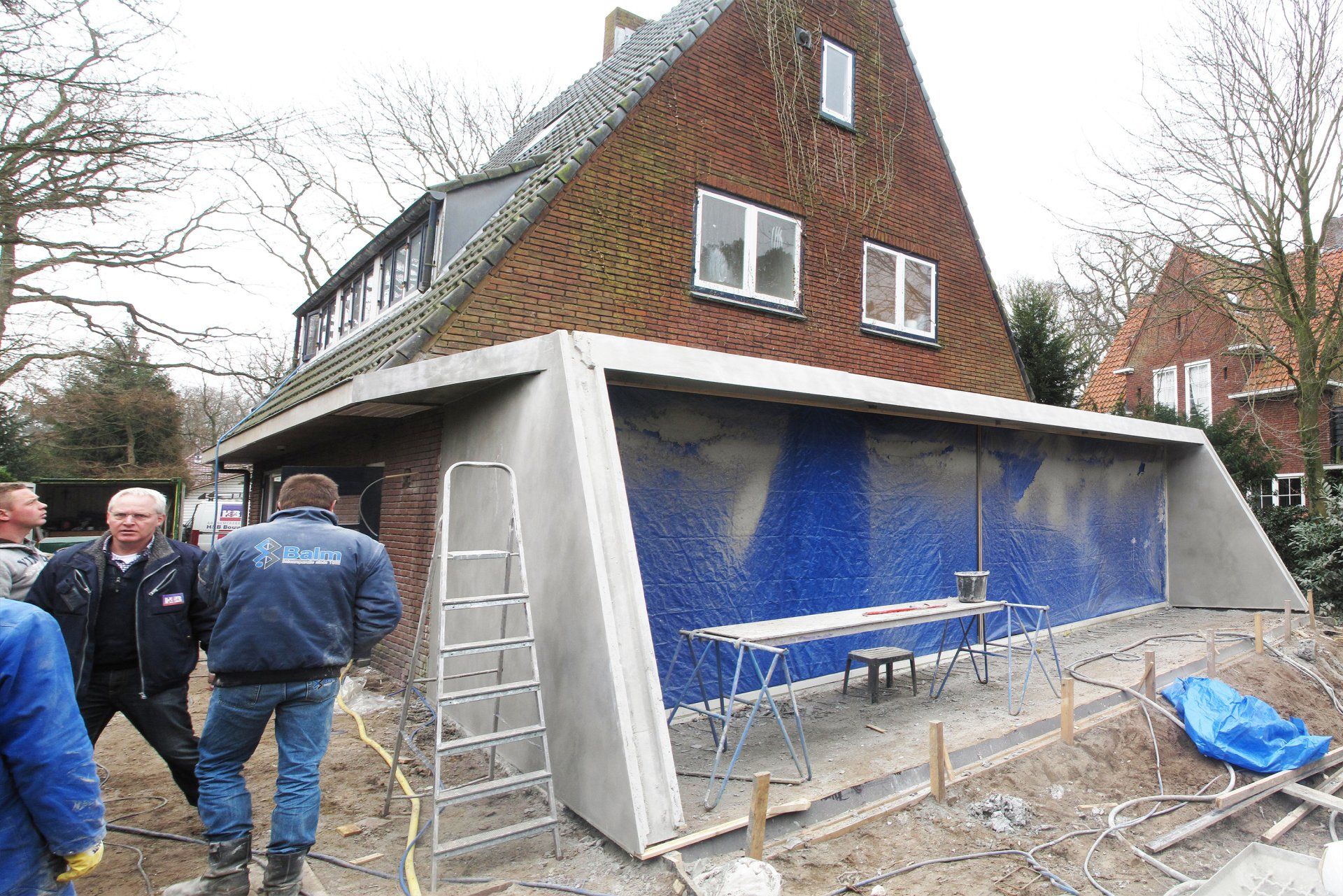
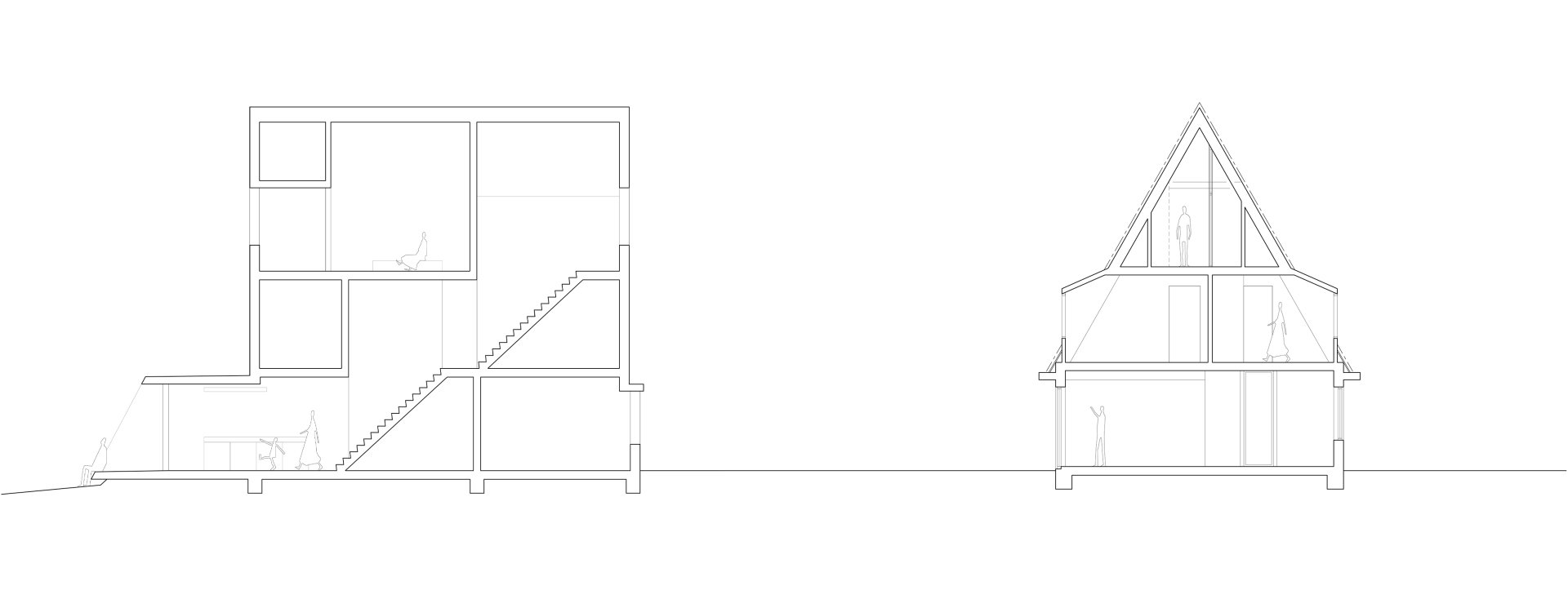
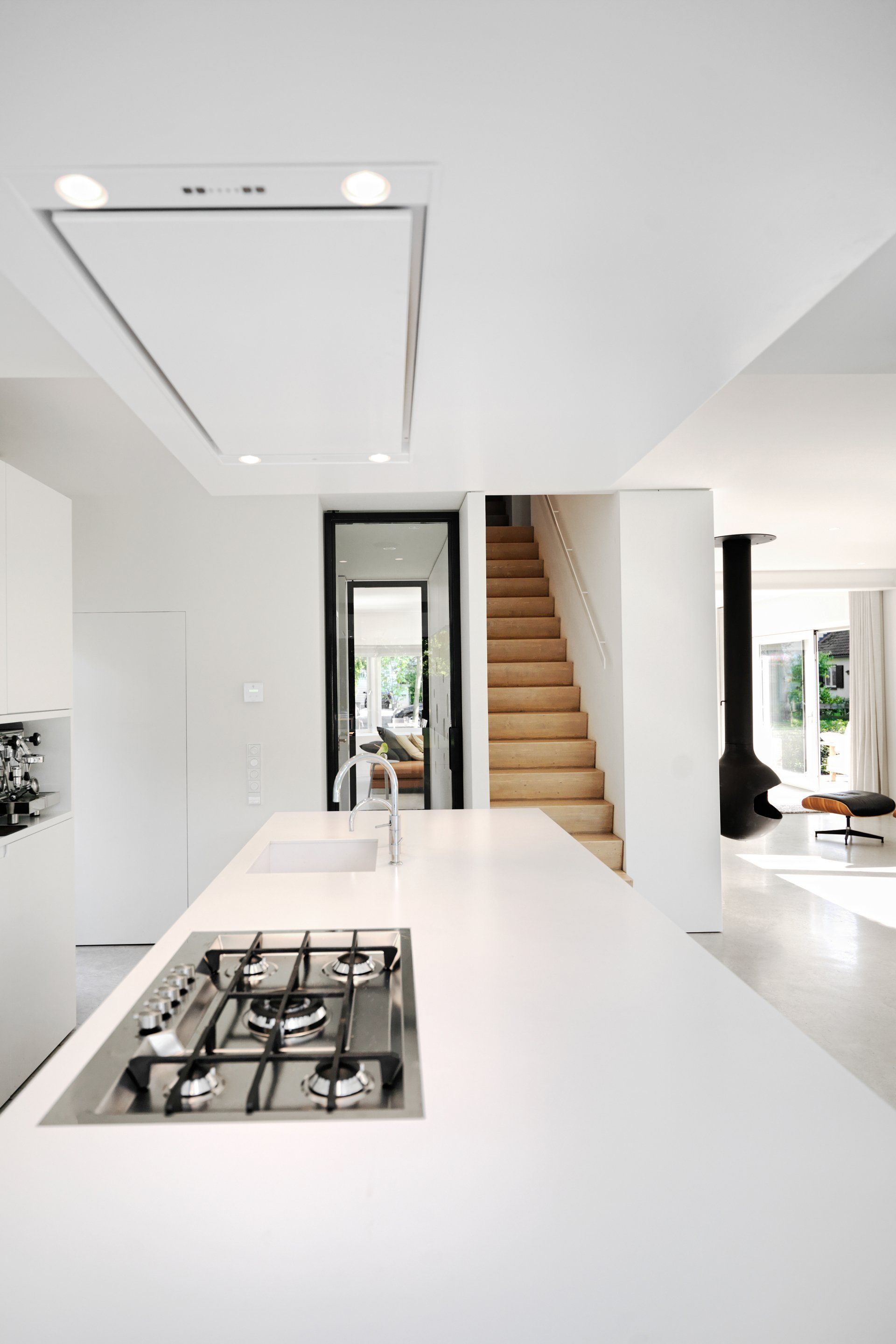
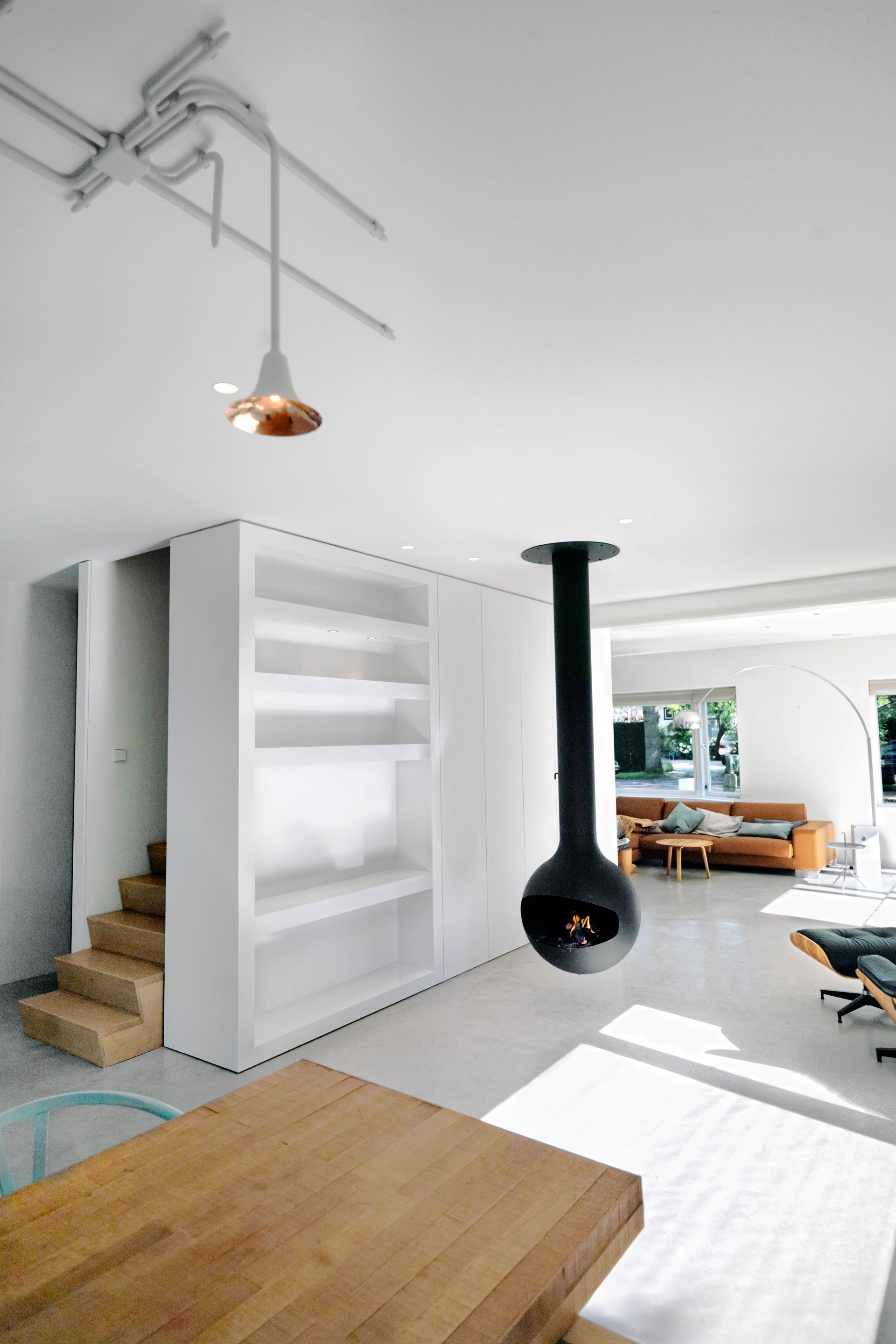
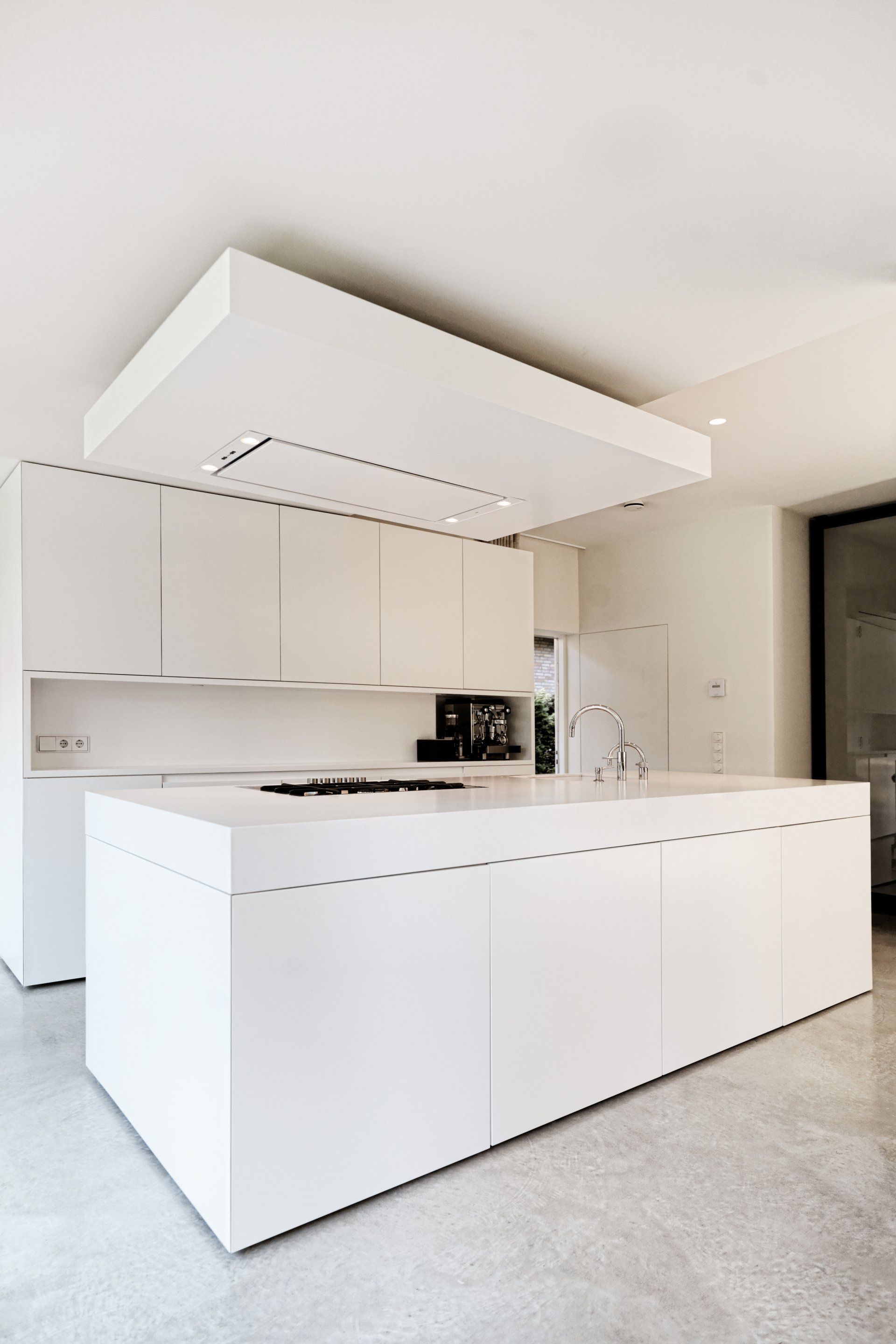
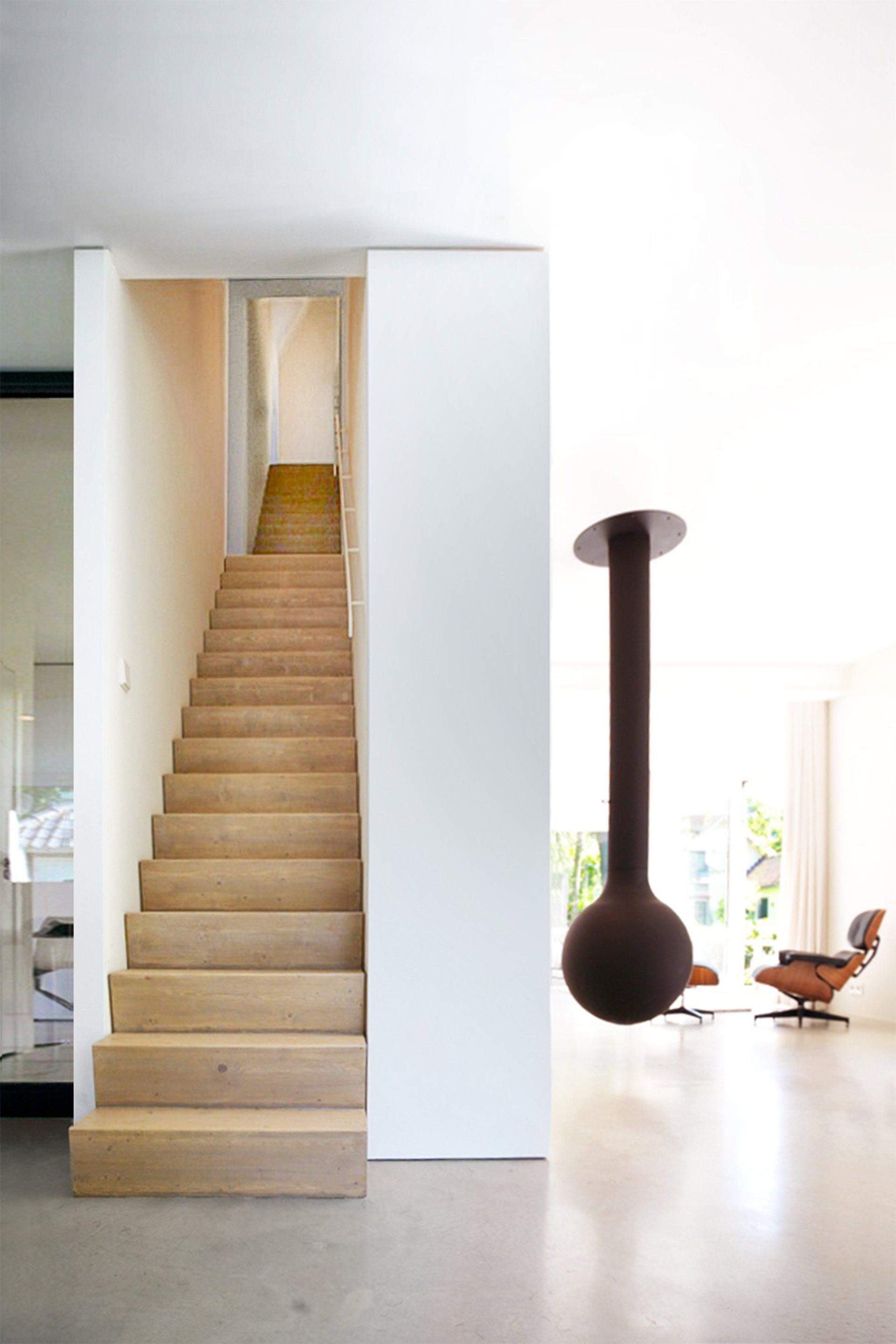
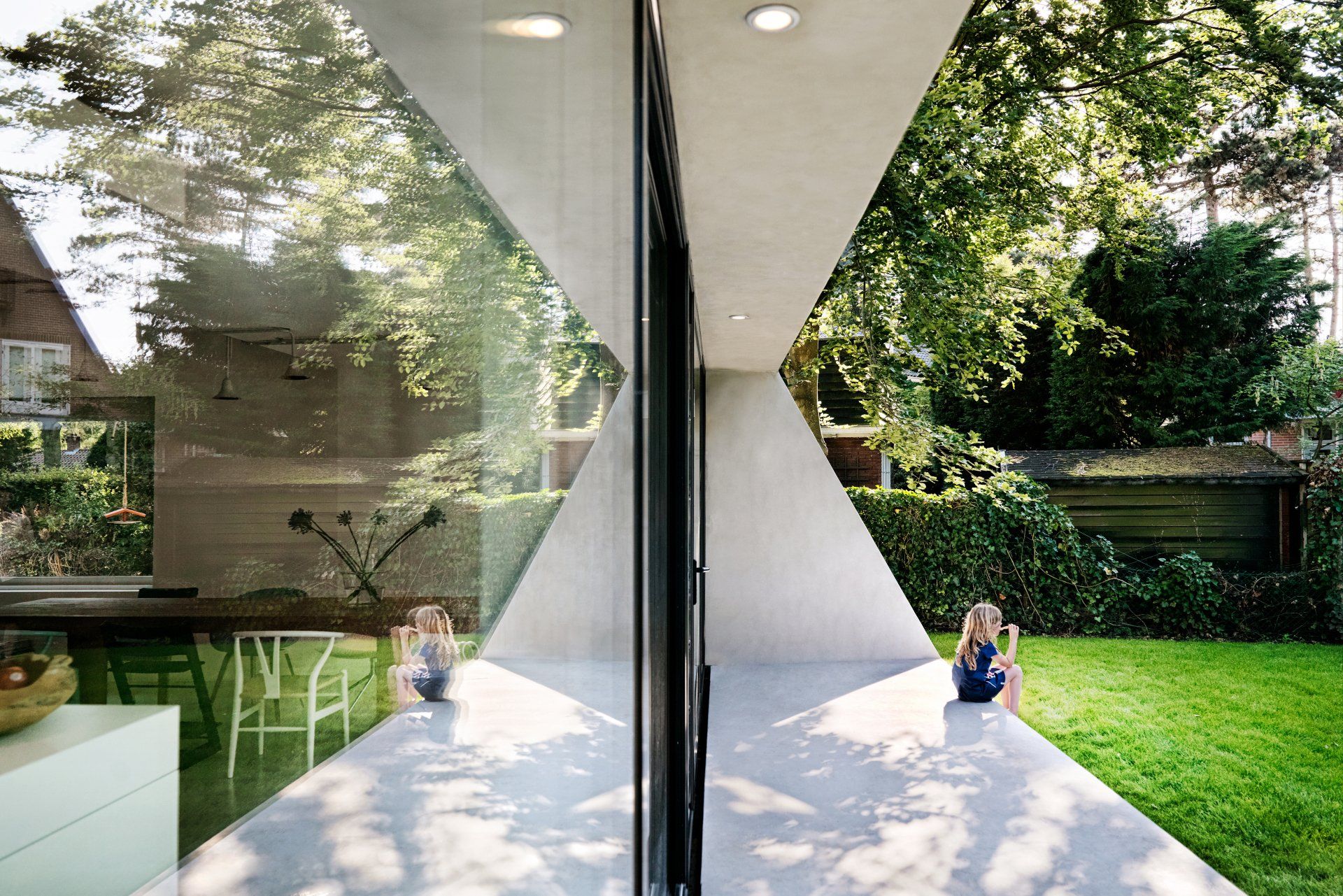
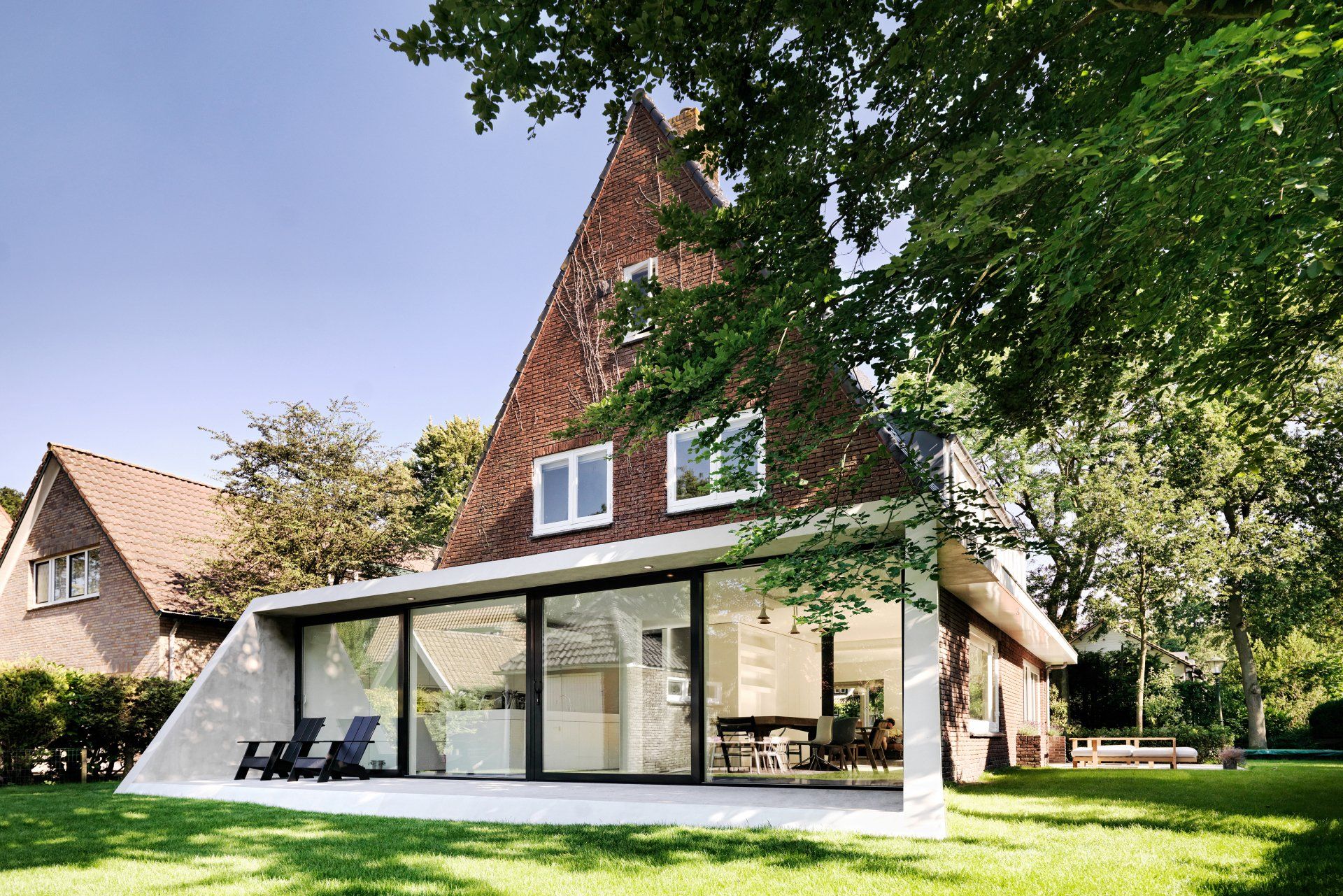
Location: Bentveld
Programme: Alterations & addition
Status: Completed
Year: 2011 - 2012
Client: Private
Area: 210m2
Team: Jacco van Wengerden, Gijs Baks, Freek Bronsvoort,
Milda Grabauskaite, Vineta du Toit
Stuctural Engineer: Ingenieursbureau Man
Building Physics; Adviesbureau Bleumink
Contracter: H&B Bouw BV
Interior Fit-out: Thomas Meubels
Photography: Yvonne Brandwijk
This was a dark and compartmental house that reflected the way that people lived in 1932, when it was built. The house was transformed and enlarged with an open floor plan, a view to the garden, and a triangular section that continues the slope of the original roof.
The house is in Bentveld, a village between Haarlem and the North Sea.
The key to the project was to maintain the overall shape and integrity of the original structure while creating an open floor plan that directs views to the garden.
Thus the distinction between garden and interior is almost eliminated so that the garden
becomes part of the living space. This was achieved by removing the internal partitions, thereby dispensing with the small, compartmental rooms that separated functions.
A new staircase was constructed, acting as the backbone of the house and connecting the first floor and attic to the ground level and garden. The result is a light and open house designed for the way we live now.
The extension itself is realized in splayed concrete. It looks and feels like a natural continuation of the vernacular roof, and the absence of details strengthens the shape.

